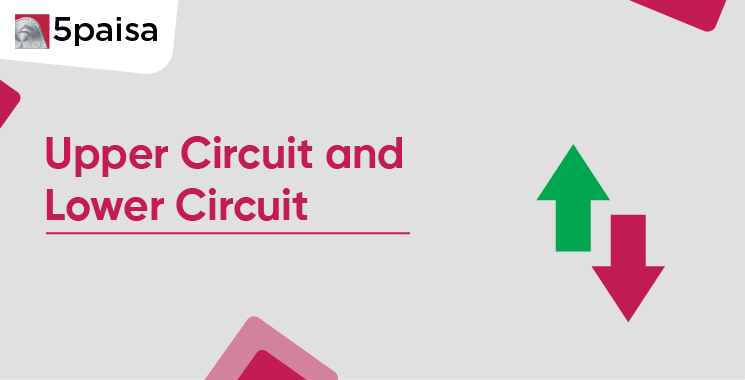Content
- Upper Circuit Meaning
- Lower Circuit Meaning
- How Circuit Breakers Are Applied to Company Stocks
- Upper and lower circuits for stocks
- Upper and lower circuits for indices
- Ways to Use Circuits on Company Stocks
- What drives the upper/lower circuit?
- How Upper Circuit and Lower Circuit Works?
- Five essential facts related to the upper and lower circuit
- How to use circuits or price bands on stocks to your advantage
- Conclusion
In the Indian stock market, price fluctuations are a daily affair. However, to prevent extreme ups and downs that could disrupt trading or trigger panic, the exchanges implement a mechanism known as circuit limits. These are essentially caps — known as upper circuits and lower circuits — that restrict how much a stock's price can rise or fall in a single day. The idea is to ensure a fair and orderly market, allowing investors to assess developments without being swept away by sudden surges or crashes.
More Articles to Explore
- Difference between NSDL and CDSL
- Lowest brokerage charges in India for online trading
- How to find your demat account number using PAN card
- What are bonus shares and how do they work?
- How to transfer shares from one demat account to another?
- What is BO ID?
- Open demat account without a PAN card - a complete guide
- What are DP charges?
- What is DP ID in a demat account
- How to transfer money from demat account to bank account
Disclaimer: Investment in securities market are subject to market risks, read all the related documents carefully before investing. For detailed disclaimer please Click here.
Frequently Asked Questions
The upper circuit in the share market refers to the maximum percentage increase in the price of a stock or an index for the day. This is determined by the stock exchange and is based on the previous day's closing price. Once a stock hits its upper circuit limit, trading is halted, and the price is frozen until the market reopens. This mechanism is in place to protect investors from excessive volatility and to prevent market manipulation. While upper circuits can be beneficial for investors who have already invested in a stock, they can also be risky for those looking to buy in, as they may not be able to purchase the stock at a reasonable price.
In the share market, the lower circuit is a price limit that restricts the trading of a stock below a certain price point. It is implemented to prevent excessive price declines in the stock market. The lower circuit sets a limit on the minimum price of a stock, below which no further trading is allowed for the day. If the stock's price hits the lower circuit, trading is suspended, and investors cannot sell the stock below the circuit limit. The lower circuit can be triggered by various factors, including negative news about the company or the industry, a drop in market sentiment, or a global economic slowdown.
The upper and lower circuit limits for stocks are determined by the stock exchanges based on the previous day's closing price. The circuit limits are set as a percentage of the previous day's closing price, typically ranging from 10% to 20% depending on the stock's volatility. If a stock hits its upper circuit limit, no further buy trades can be executed above that price, and if it hits the lower circuit limit, no further sell trades can be executed below that price. These circuit limits serve as a protective mechanism to prevent extreme price fluctuations and to ensure market stability.
Upper and lower circuit limits are imposed in the share market to avoid excessive volatility and protect investors from drastic price movements. These limits act as a safety mechanism that temporarily halts trading in a particular stock or index when its price moves beyond a pre-determined threshold. The use of circuit limits also helps maintain market stability and promote fair trading practices. Overall, the imposition of upper and lower circuit limits helps ensure a more orderly and stable stock market for investors.
No, not all stocks are subject to upper and lower circuit limits. Circuit limits are generally applicable to stocks that are considered highly volatile and prone to extreme price fluctuations. The stock exchanges typically identify such stocks and impose circuit filters based on their volatility. The criteria for determining which stocks are subject to circuit limits may vary from exchange to exchange and may depend on factors such as market capitalization, trading volume, and liquidity.
When a stock hits the upper circuit, it means that the price has reached the maximum limit allowed for the day as per the circuit filter. Trading is then temporarily halted in the stock, and buyers can only purchase shares if sellers are willing to sell at the upper circuit price.
Similarly, when a stock hits the lower circuit, it means that the price has reached the minimum limit allowed for the day as per the circuit filter. Trading is temporarily halted in the stock, and sellers can only sell their shares if buyers are willing to purchase at the lower circuit price. In other words, there are more sellers than buyers, which creates a surplus of available shares.



